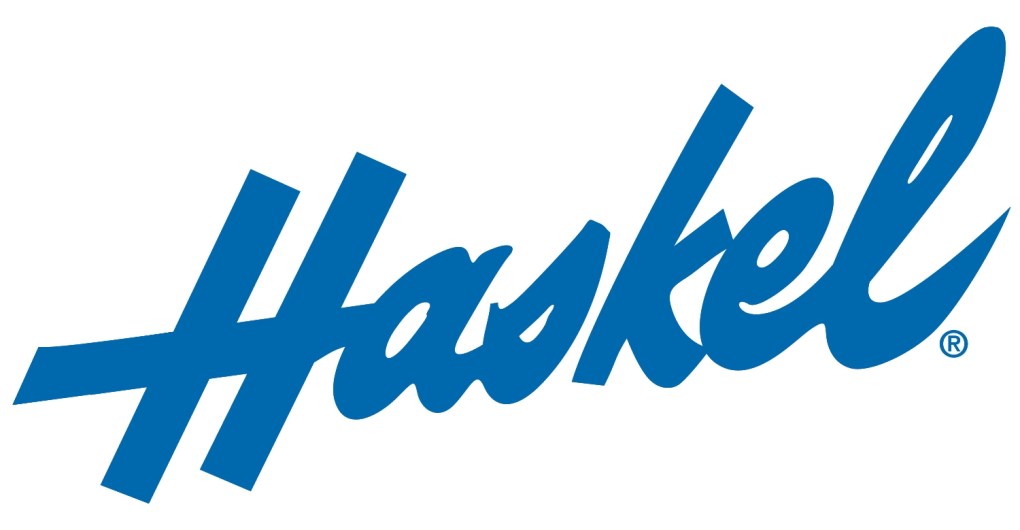
Haskel gas boosters are used for boosting most all commonly available industrial gases. However, the gas should be “Dry Gas”, (no moisture content.) Some gases cannot be pumped with standard boosters, e.g. pure Oxygen or Hydrogen. Depending on the gas and application, e.g. Dry Gas Seal applications, some boosters will require special seals, materials of construction, venting, special cleaning and other considerations. Knowing the specific gas is also necessary to determine gas compressibility at the desired pressure. Compressibility is a factor used in calculating flow rates at different pressures or filling times into a vessel.
Gas booster compressors are suitable for transfer and pressurization of:
1. Nitrogen (N2)
2. Helium (He)
3. Breathing Air (N202)
4. Nitrous Oxide (N20)
5. Carbon Dioxide (CO2)
6. Neon (Ne)
7. Argon (Ar)
8. Sulphur Hexafluoride (SF6)
9. Oxygen (O2)*
10. Carbon Monoxide (C)**
11. Hydrogen
(H2)**
12. Methane (CH4)**
13. Ethylene (C2H4)**
14. Deuterium (D2)**
15. Natural Gas (CH4)** (often contains high proportion of CO2 & N2)
Note: Liquefied gases (propane, CO2, nitrous oxide, halons, etc.) can be boosted as a liquid or gas in controlled applications.
* Oxygen (O2)- maximum safe working pressure 345 bar (5000 psi).
** For these gases (10-15), the gas booster must be operated in a safe and well ventilated area and vent(s) piped to controlled environment.
Theory of Operation
Haskel Gas Boosters consist of a large area reciprocating air drive piston directly coupled by a connecting rod to a small area gas piston. The gas piston operates in a high pressure gas barrel section. Each gas barrel end cap contains high pressure inlet and outlet check valves. Varying applications require many different booster and horse power (HP) combinations. Haskel can assist with HP and Cooling requirements and provide circuitry assistance on the following issues: PID Control – review and advisement, electrical control, and heat exchanger recommendations. General HPU recommendations and guidelines are available from Haskel drawing 87100-TAB. The air drive section includes a cycling spool and pilot valves that provide continuous reciprocating action when air is supplied to the air drive inlet. The ratio between the area of the air drive piston and the gas driven piston is indicated by the number in the model description and approximates the maximum pressure the gas booster is capable of generating.
Isolation of the gas compression chambers from the air drive section is provided by three sets of dynamic seals. The intervening two chambers are vented to atmosphere. This design prevents air drive contamination from entering the gas stream.
Cooling is provided by routing the cold exhausted drive air through an individual jacket surrounding the gas barrel.
Check valves also allow for the equalization of upstream and downstream pressure prior to boosting, therefore the gas booster only needs to “raise” the upstream pressure to the required pressure and does not have to raise it from atmospheric pressure.
Operating temperatures for Gas Booster
There are two distinct sections: the air drive section and the gas barrel section.
Air Drive Section: Standard Air Drive Seals should perform reliably within a temperature range of (25°F to 150°F) (-4°C to 65°C). Lower temperatures will cause air/gas leakage; higher temperatures reduce seal life. Haskel recommends a minimum Class 4 air quality per ISO 8573.1 standards. For operation at extremely low temperatures, consult factory.
Gas Barrel Section: Low temperatures normally have little effect on the operation of standard parts and seals. The heat from the compressing gas helps to balance out an acceptable temperature.
Maximum average acceptable temperature 115°C (240°F).




